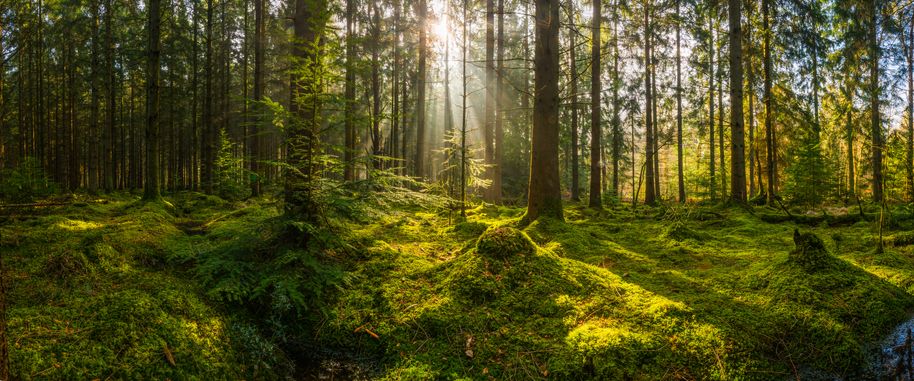Of the current range of negative emission technologies (NETs), investors can achieve the greatest near-term financial gains from nature-based solutions (NBS), according to a Principles for Responsible Investment (PRI) report.
The PRI’s Inevitable Policy Response project estimated that NBS could generate $800bn (€677.29bn) in annual revenues by 2050 (see graph below).

The opportunity is being driven by increased target setting by governments, businesses and investors.
The number of companies committed to net zero increased three-fold to 1,541 in 2020, up from 500 recorded in 2019; while cities’ commitments grew eight-fold to about 823 in 2020, from 100 recorded the previous year.
Technical solutions, such as Daccs and Beccs, could generate an additional annual revenue of $625bn by 2050, the report said.
It identified the following as the most important negative emission technologies (NETs):
- afforestation and reforestation,
- soil carbon sequestration,
- bioenergy with carbon capture and storage (Beccs),
- direct air capture of CO2 with CCS (Daccs),
- biochar, and
- enhanced weathering.
The study seeks to clarify assumptions of corporate net zero targets and climate scenarios around NETs; discusses risks and uncertainties associated with the technologies; and assesses what upside opportunities they can offer to investors. It also offers an in-depth overview of the six NETs, their costs and carbon removal potential, as well as possible positive and negative side effects.
While some NETs are widely employed, such as re/afforestation, others are at early stages of their development, such as Daccs.
The Inevitable Policy Response (IPR) Forecast Policy Scenario (FPS) shows that biogenic greenhouse gas (GHG) emissions remain by 2050, as well as emissions from agriculture and fertiliser use, and that NETs are required to reach net-zero global emissions.
As policy responses to reduce emissions are delayed, NETs will inevitably grow in importance in keeping global temperature rise to well below 2°C.
“In almost all Paris-aligned scenarios, Beccs is the leading NET because of its double gains through energy generation and CO2 sequestration; yet producing high levels of bioenergy is likely to push the world to its planetary boundaries in terms of water and land availability,” the authors of the report said.
To limit its negative side effects, Beccs should be contained to around 0.5 – 5 gigatonnes of CO2 per year, the study suggests.
Evolving NET opportunity
NETs are the next investment frontier and offer trillion-dollar upside opportunities for investors, according to the report.
In the near term, investors can reap the greatest financial gains from NBS, especially through measures to combat deforestation and promoting re/afforestation.
In the longer term, post-2040, as Beccs approaches its sustainable limit, technical solutions, such as Daccs, are opportunities to watch (see graph below).

The authors suggest that deploying a portfolio of multiple NETs, each at a sustainable scale, would provide a hedge against uncertainties and negative impacts associated with the large-scale application of each NET.
Big oil and big tech have already started to channel their resources into forest-related NBS to achieve net-zero targets, driving demand for NBS carbon credits, the report said.
Amazon launched the Right Now Climate Fund, investing $100m in NBS. And by 2050, the value of the global voluntary offset market could reach $200bn, increasing by around a quarter every year.
The report suggests that an entire new industry around nature-based carbon storage will emerge, unlocking new business models and opportunities for avoided deforestation, reforestation and afforestation and land restoration.
With this, new financing mechanisms are created, allowing private investors to channel finance towards forest-related NBS projects. Examples are distressed asset and stewardship models, carbon farming agreements, green bonds, forest insurance provision, carbon off-taker guarantees and sustainable farming agreements.
Fiona Reynolds, chief executive of the PRI, commented: “We can’t achieve net zero without nature-based solutions. The pandemic has supercharged the investment case, especially in forestry, and this new analysis shows the magnitude of the opportunity.
“Forest finance has historically been small and largely the purview of the public sector. But policy and business momentum have now advanced to a critical mass for forests to begin emerging as a new asset class. With more and more companies setting net zero targets, investors also need greater transparency about the negative emission technologies businesses will rely on to get there.”
Investor recommendations
The report also found that a company’s valuation could decrease by around 15% due to deforestation risks associated with legal action, market access, and consumer pressure.
To reduce the exposure of their portfolios to carbon-exposed sectors, investors need to put pressure on companies to commit to climate action and cease investments in those that foster deforestation in their supply chains, the report emphasised.
Investors could also engage with policymakers to promote a global standard for NBS projects, which could help to create a global market and unlock the global finance that is crucial for a rapid scale-up.
Allison Spector, director, sustainability at Nuveen, said: “We believe there is a powerful role for forest-based natural climate solutions. Yet the feasibility of implementing these strategies across the vast forestlands of the world is yet to be demonstrated and is predicated on an end to deforestation.
“To realise the climate mitigation potential of forests, Nuveen and its timber manager, Greenwood Resources, work with investors to develop opportunities in the US and Latin America focused on improving forest management to store more carbon and reforesting degraded landscapes into productive forests.”







